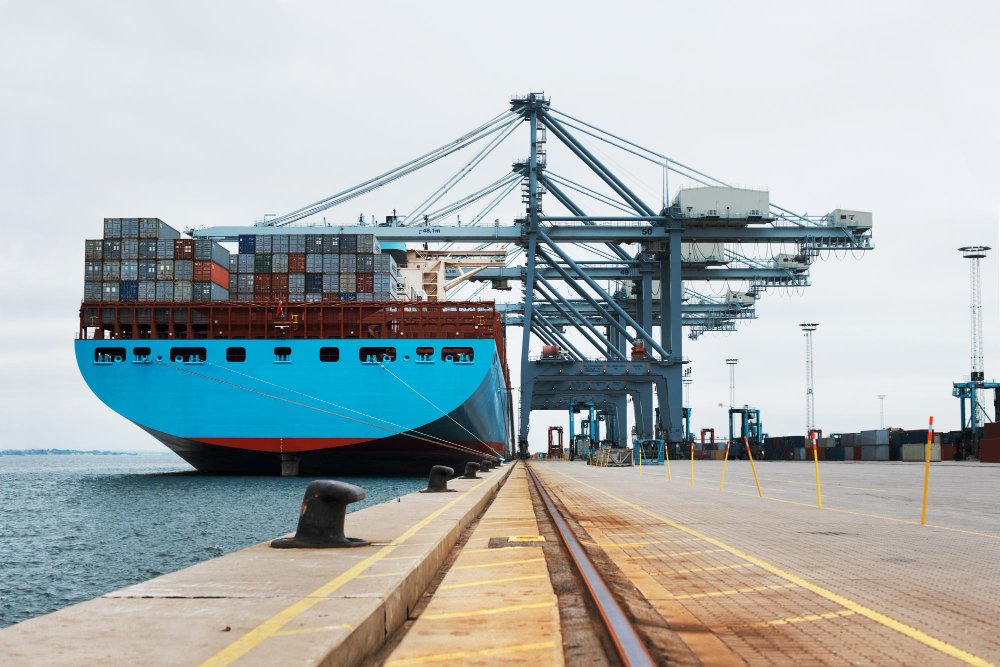The Philippines is an island nation, making sea travel absolutely essential for trade and commerce. Sea freight services in the Philippines are the backbone of both domestic and international logistics for the entire country. This method moves everything from raw materials needed for production to consumer goods across the many islands and beyond. Understanding the regional differences of sea transport is key to running successful shipping operations. Businesses must use these specific insights to choose the best routes and logistics partners for their goods.
What are Sea Freight Services in the Philippines?
Sea freight services involve moving very large volumes of cargo using ships that travel by ocean and sea routes. This is the cheapest way to move heavy, large, or non-urgent items for businesses. In the Philippines, these services cover both inter-island shipping and crucial international shipping activities. Inter-island routes connect major cities like Manila, Cebu, Davao, and other primary ports within the country efficiently. International routes connect Philippine ports directly to trading partners around the world quickly.
Types of Cargo Services
These services are primarily provided through two common types of container shipping that businesses use. Full Container Load (FCL) means a business pays for and uses an entire large shipping container for their own cargo exclusively. Less than Container Load (LCL) means a business shares space inside a single container with cargo from other various companies. The choice between FCL and LCL depends directly on the volume of goods being shipped by the business. Sea freight services in the Philippines often involve specialized vessels for different types of cargo, like bulk carriers for loose materials or Ro-Ro ferries for moving vehicles.
Why Regional Insights are Crucial for Sea Freight Success
Understanding the regional insights of sea freight services in the Philippines is critical for achieving efficient logistics. The most important reason is understanding route and port efficiency across different regions. The quality and size of ports vary greatly across the different regions of the country. Large ports like MICT handle the biggest ships and have modern equipment ready to use. Smaller, regional ports may have less capacity and much slower processing times overall. Knowing these details helps set realistic delivery expectations for your customers.
Cost Variation and Weather Risks
Another crucial reason is cost variation for shipping within the country itself. The rates for moving cargo are not the same across the archipelago due to many local factors. Shipping a container from Manila to Cebu will have a very different cost structure than shipping from Manila to General Santos City. These regional pricing differences are based on fuel costs, port fees, and carrier competition on specific local routes. Businesses can save a lot of money by analyzing and choosing the most cost-effective regional shipping hub available.
Regional insights also address seasonal risks and extreme weather patterns that cause delays. Different regions of the Philippines experience severe weather events like typhoons at different times of the year. This severe weather can lead to sudden port closures and major voyage delays for all ships. A business shipping to Mindanao during its heavy rainy season must factor in a higher risk of delay than a business shipping to a drier region. Planning around regional weather calendars is essential for service reliability.
Finally, regional insights help with regulatory compliance at the local level of government. Local port authorities and regional customs offices may have slightly different procedures or required documentation needed. Understanding the specific requirements of the port where your goods will be loaded or unloaded prevents bureaucratic delays and possible fines. This knowledge ensures a faster and much smoother flow of goods from one region to another or overseas.
How to Optimize Sea Freight Using Regional Data
Philippine businesses can use regional data to optimize their sea freight services in the Philippines effectively and save money. The first strategy is to choose the right regional gateway port for your specific needs. For shipping abroad, picking the largest, most efficient port nearby is usually the fastest choice for your goods. However, for domestic distribution, using a centrally located regional port can greatly reduce total transportation costs for the company. The key is to balance the port’s size against the final trucking distance needed.
Local Experts and Transport Plans
Next, businesses should build relationships with localized agents who know the area and the ports well. Using a freight forwarder or agent who specializes in a specific regional port is highly valuable to any business. These local experts know the port’s operating hours, common bottlenecks, and the best local trucking companies to use. Their local knowledge can make customs and loading faster, saving much time for your delivery.
A third important strategy is to create a multi-modal transport plan for complex routes across the islands. This involves combining sea freight with other modes of transport for the final mile delivery. For example, a business can ship a container by sea to a major regional hub first. Then, they can use smaller trucks or inter-island ferries to reach the final small island destination easily. This combination is often faster and more flexible than trying to find a single ship for the entire difficult route.
Furthermore, businesses should monitor regional shipping schedules closely at all times of the year. Sea freight schedules are published, but they are often subject to change due to bad weather or port congestion issues. Using a real-time tracking system that includes local port updates helps predict delays before they happen. This technology can warn managers about delays from weather or crowded ports days early.
Finally, businesses must negotiate regional volume contracts with major carriers if possible. If you frequently ship between two specific regional ports, negotiate a fixed-volume contract with a major carrier. This can secure much lower rates and guaranteed capacity on those specific, high-demand routes you use often. Utilizing regional volume commitments ensures both predictability and significant cost savings over time for the company.
Key Takeaway
Sea freight is the lifeblood of commerce and trade in the Philippine archipelago, connecting all islands to the world. Successful logistics depends on moving beyond general knowledge to having detailed regional insights for every area. By understanding port capabilities, localized costs, and seasonal risks, businesses can make smarter decisions for their supply chain. Strategic planning based on regional data ensures that sea freight services in the Philippines remain reliable, cost-effective, and efficient for all growing businesses.












Leave a Reply